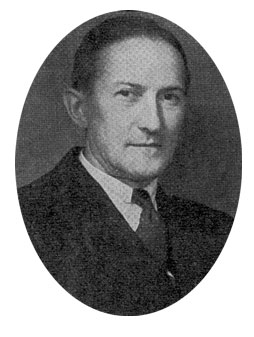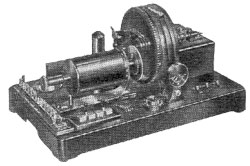
|
|
Nobel laureate Jaroslav Heyrovsky (1890-1967) was
a born in Prague, the son of a law professor at Charles University.
After a classical education in Prague, he advanced to University
College (London) where he eventually worked as a student of F.G.Donnan
in electrochemical research. At Donnan’s suggestion, he began
studies of liquid metal electrodes (aluminum amalgams) which were
continuously renewed by delivery from glass capillaries. World was
I interrupted his research in England and he was called to serve
in the Austro-Hungarian army as a dispensing chemist. Nonetheless,
he continued his experiments in the hospital pharmacy and was able
to prepare a Ph.D. dissertation while still a soldier. During his thesis defense at Prague University (1918), he met Prof.Kucera, who invited Heyrovsky to join his research group to study the dropping mercury electrode (DME) for electrocapillary measurements. This was tedious work. A voltage was applied to a DME and a reference electrode was immersed in a test solution. After 50 drops of mercury were collected, they were dried and weighed. The applied voltage was varied and the experiment repeated. Measured weight was plotted vs. applied voltage to obtain the curve. Heyrovsky continued this work in his own laboratory and eliminated the weighing step by monitoring drop-time. In 1921, he had the idea of measuring the current flowing through the cell instead of just studying drop-time. Using an amperometer, he made his first experiment on New Year’s Day, 1922. It didn’t work. Heyrovsky was undaunted and borrowed a sensitive galvanometer to measure currents flowing from an electrolytic cell with a potentiometer as the voltage source. On February 10, 1922, the
“polarograph” was born as Heyrovsky recorded the current-voltage
curve for a solution of 1mbl dm-3 NaOH. Heyrovsky correctly interpreted
the current increase between -1.9 and -2.0 V as being due to deposition
of Na+ ions, forming an amalgam. From this beginning, the measurement
of polarographic current was extended to fundamental and theoretical
studies of electrode processes, accompanying chemical reactions
and analysis. Heyrovsky was possibly the most powerful influence
on the development of electroanalytical science in the twentieth
century. |













